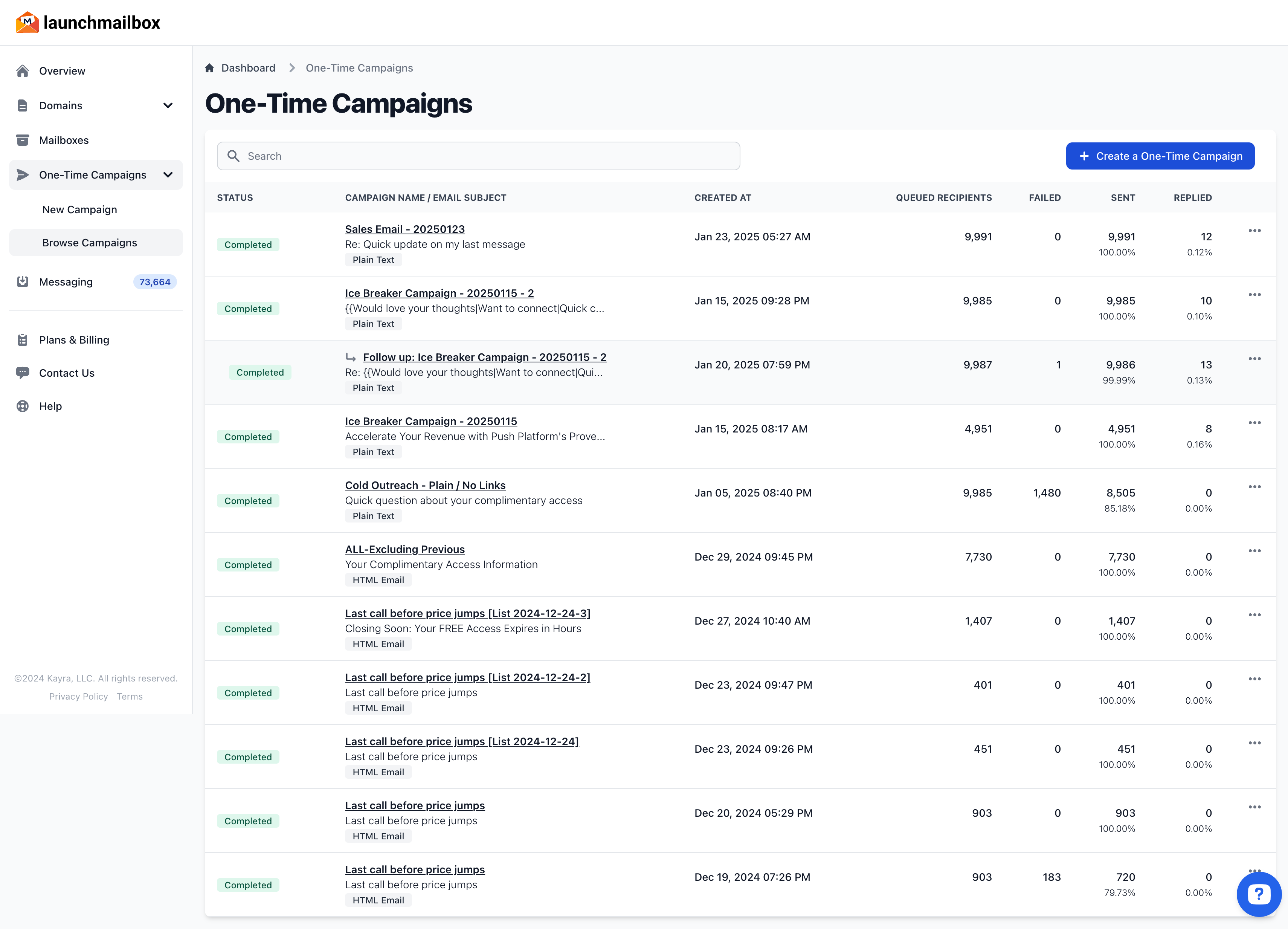Terminology in LaunchMailbox
This guide explains the key terms and concepts you'll encounter while using LaunchMailbox. Understanding these terms will help you make the most of our email infrastructure platform.
Basic Concepts
Namecheap
Namecheap is a popular domain name registration service that LaunchMailbox integrates with. It allows you to purchase and manage domain names for your email campaigns.
Namecheap API Key
A Namecheap API key is a unique secret code that allows LaunchMailbox to securely connect with your Namecheap account. This integration enables automatic domain registration and management directly from LaunchMailbox.
🔒 Security Note: Keep your Namecheap API key confidential, as it provides access to your Namecheap account.
Domain
A domain name (e.g., yourcompany.com) is your unique address on the internet. In email marketing, having your own domain is crucial because:
- It establishes your brand identity
- Helps build sender reputation
- Increases email deliverability
- Makes your emails look more professional
Mailbox
A mailbox is an email address (e.g., [email protected]) that can:
- Send outgoing emails for your campaigns
- Receive incoming responses from recipients
- Store email conversations and correspondence
Campaign Types and Features
One-Time Email Campaign
A campaign type where emails are sent once to a specific group of recipients. Unlike drip campaigns or sequences, these campaigns:
- Send all emails in a single batch
- Target a defined list of recipients
- Are ideal for announcements or time-sensitive offers
Email Personalization
The practice of customizing email content for each recipient. You can personalize:
| Element | Example |
|---|---|
| Subject Line | "{{contact.first_name}}, special offer for you" |
| Email Body | "Dear {{contact.first_name}} {{contact.last_name}}" |
Email Authentication and Technical Terms
Email Authentication
A set of security protocols that verify your emails are legitimate and come from an authorized sender. Proper authentication:
- Prevents email spoofing
- Improves deliverability
- Protects your sender reputation
- Reduces the chance of emails going to spam
SPF (Sender Policy Framework)
An email authentication method that specifies which mail servers are allowed to send emails from your domain. It helps:
- Prevent email spoofing
- Improve deliverability
- Maintain sender reputation
DKIM (DomainKeys Identified Mail)
A digital signature system that:
- Verifies email authenticity
- Ensures emails haven't been tampered with in transit
- Adds a layer of security to your emails
DMARC (Domain-based Message Authentication, Reporting & Conformance)
A policy framework that:
- Builds on SPF and DKIM
- Tells receiving servers how to handle authentication failures
- Provides reporting on email authentication results
MX (Mail Exchange) Records
DNS records that:
- Direct incoming emails to your mail servers
- Specify email handling priorities
- Are essential for receiving emails properly
Email Sender DNS Records
A collection of DNS records that establish your email sending infrastructure, including:
- SPF records
- DKIM records
- DMARC records
- MX records
Email Performance Metrics
Warm-Up
The process of gradually increasing email sending volume to establish sender reputation. A proper warm-up:
- Starts with low volumes
- Gradually increases over time
- Helps avoid spam filters
- Builds domain reputation
Sending Limits
Maximum number of emails you can send within a specific timeframe. Limits are based on:
- Domain age
- Sender reputation
- Warm-up status
- Email authentication setup
Email Delivery Rate
The percentage of emails successfully delivered to recipient inboxes. Calculated as:
Delivery Rate = (Delivered Emails ÷ Total Emails Sent) × 100
Open Rate
The percentage of recipients who opened your email. Calculated as:
Open Rate = (Number of Opens ÷ Delivered Emails) × 100
Click-through Rate (CTR)
The percentage of recipients who clicked a link in your email. Calculated as:
CTR = (Number of Clicks ÷ Delivered Emails) × 100
Bounce Rate
The percentage of emails that couldn't be delivered. There are two types:
- Hard Bounces: Permanent delivery failures (invalid email address)
- Soft Bounces: Temporary delivery issues (full inbox)
Calculated as:
Bounce Rate = (Number of Bounces ÷ Total Emails Sent) × 100
Spam Complaint Rate
The percentage of recipients who marked your email as spam. Calculated as:
Spam Complaint Rate = (Number of Spam Complaints ÷ Delivered Emails) × 100
⚠️ Important: Keep your spam complaint rate below 0.1% to maintain good sender reputation.
